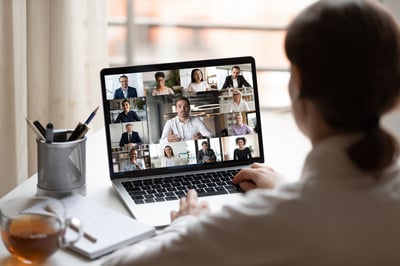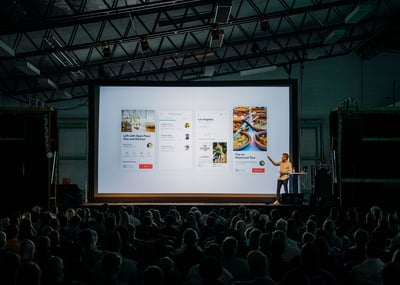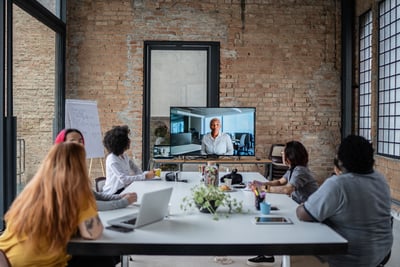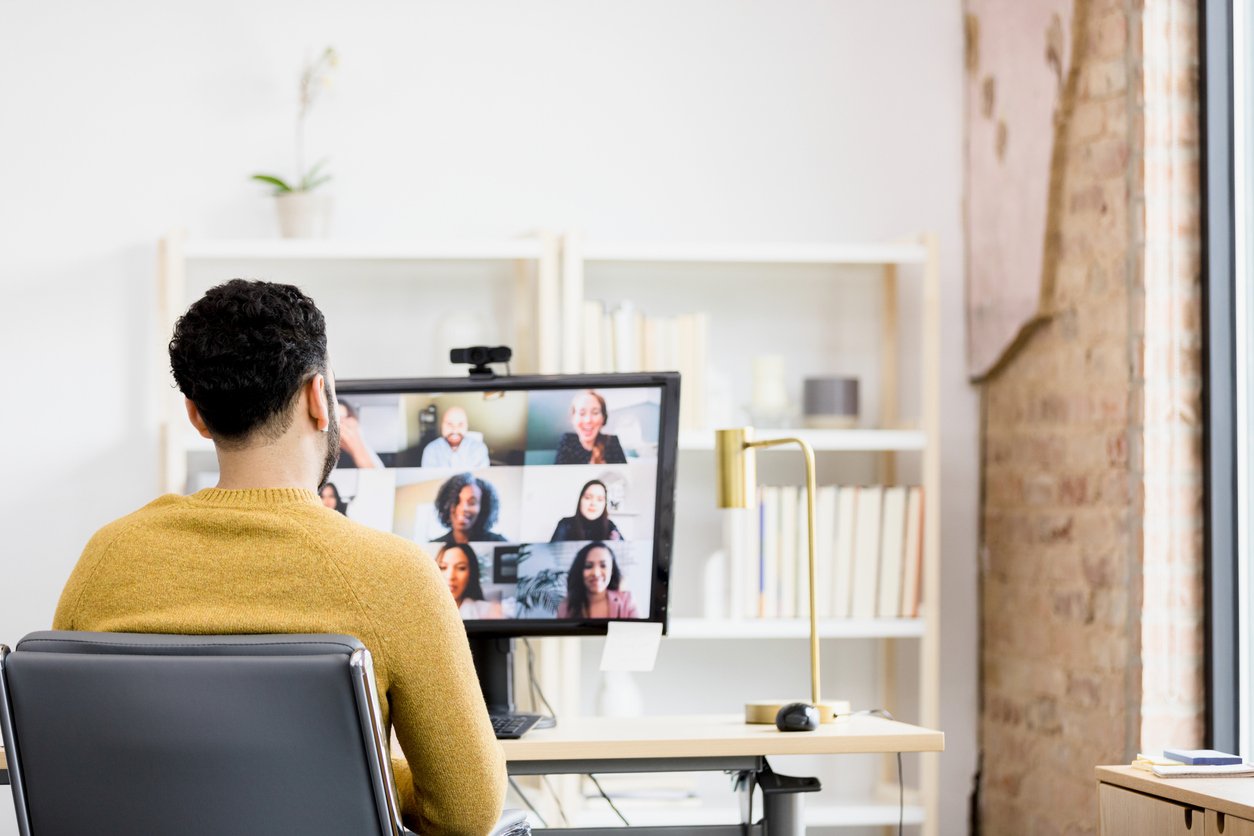

As the digital world moves toward a cookie-free environment, marketers must source first-party insights to fuel their marketing and sales pipeline.
Sourcing first-party insights helps marketers infuse personalization in their communication to make their messaging resonate better with their ideal customer profile (ICP).
While there are many unique ways to gather first-party data, one underrated goldmine is events.
In this article, we take a closer look at the critical role that event data collection plays in the changing landscape of data sourcing. Our focus is on creating strategies for event marketing and providing comprehensive guidance on how to collect and effectively use first-party data at events.
In a changing data acquisition landscape, understanding event data collection is key for today’s marketers.
This section will examine the nuances of event data collection, distinguish between first-party data and third-party data, and offer solutions for preparing for a cookie-free future.
There are two main types of online data: first-party and third-party data.
Third-party data is like a big pool of information gathered by tracking people’s journeys across different websites using cookies. It used to be free and widely used by marketers.
However, big platforms like Google and social media sites are stopping this practice, making it harder to access.
First-party data is data you collect directly from people who visit your own website. It's like having a conversation with your website visitors. You can get insights into what they like and the actions they perform on your site.
Since this data is collected directly from your visitors, it's more accurate and useful for tailoring your website and services to what your website visitors really want. So, as the rules change, focusing on understanding your own visitors through first-party data is becoming super important for businesses.
Here are four common event data touchpoints that can guide us to understand what attendees like and how they behave. While these four points are essential, there are many other ways to collect valuable data too.
When attendees register and purchase tickets, they provide valuable information.
For marketers, this event data collection is gold. It forms the foundation for building ICPs. Analyzing registration details and ticket purchases helps marketers identify customer patterns and preferences.
This insight not only refines the current event but also guides post-event targeting, allowing marketers to reach out to new potential audiences who align with the established ICPs.
Understanding when attendees engage the most during an event helps uncover the key to effective channel marketing.
For strategies relying on timing, like email campaigns and social media posts, this event data collection is invaluable. By pinpointing the peak engagement hours, marketers can schedule their communications more effectively.
Emails sent or social media posts shared during these active periods are likely to receive higher responses, enhancing the impact of marketing efforts significantly.
Analyzing content interactions provides insights into attendees’ interests and preferred formats.
It showcases topics people are intrigued by and how they prefer to consume information., Event data collection highlights the most engaging content types, be it videos, PDFs, infographics, or other formats.
For marketers, this knowledge is a treasure trove. It enables them to tailor content to match audience preferences, ensuring higher engagement and resonance with the attendees.
These distinctive event features serve as valuable indicators, allowing marketers and HR teams to concentrate their efforts on products, job positions, or perks that resonate most with attendees.
By pinpointing attendee interest, these insights enable a targeted approach in future campaigns, ensuring a more tailored and effective outreach strategy.
In-event surveys are a powerful tool for primary event data collection, which can supplement research efforts. For example, a symposium on infectious diseases can be a great place to collect research-backed inputs from medical industry thought leaders.
Let’s dig deeper into why they’re so valuable and find out how to optimize their efforts:
Soliciting inputs is crucial for collecting valuable insights. When attendees are present at the event, they are more receptive to pausing for five minutes and filling out an in-event survey. Their views are fresh, increasing the probability of more candid responses.
In-event surveys are a direct way to get feedback on attendees’ opinions, preferences, and experiences. They provide a wealth of first-party data that can inform your operational strategies, empowering organizers to do better.
Developing the right research questions is an art.
Know how to formulate questions that not only elicit logical answers but also align with the goals of your project. Learn to strike a balance between depth and brevity to ensure stakeholder engagement.
Typically, open-ended questions have a lower response rate. Whereas, multiple-choice surveys get more participation. While deciding the format of the survey, consider what your target audience would prefer. If you believe your audience would like to add their views, you can always leave a section for comments.
Attending meetings often means limited opportunities to gather information.
Look for ways to encourage attendees to volunteer to participate in surveys. Identify strategies that make research easier and more rewarding. Small gestures like giving gift cards can encourage participation. Moreover, if you are conducting research, you can also ensure the contributors would be probably quoted in the research report.
Surveys are a great way to get valuable insights that extend beyond the event itself. Surveys allow organizers to collect feedback about attendees' experiences during the event, providing essential information to enhance future events.
By examining responses related to the event experience, organizers can pinpoint areas of improvement, helping to craft even more engaging and satisfying events in the future.
Surveys serve as a potent tool for gathering insights into what attendees desire for future engagements.
This type of event data collection goes beyond the immediate event planning and can be seamlessly integrated into broader marketing campaigns and strategies across various channels.
Understanding attendees' preferences and interests helps shape marketing content, tailor messaging, and refine strategies to resonate with the target audience effectively.
In essence, survey data not only aids in event enhancement but also becomes a strategic asset for ongoing marketing endeavors, ensuring a consistent and personalized approach that extends beyond the boundaries of individual events.
At its core, user journey tracking involves capturing and analyzing every interaction a visitor has with your event. This includes booths visited, meetings attended, contact information exchanged, and so on.
By mapping an attendee’s path through your event, you will gain valuable insight into their interests, preferences, and engagement patterns.
Event organizers can use various new tools and technologies to track user journeys better. These include event apps with tracking capabilities, RFID or NFC badges, and beacon technology.
Collecting user journey data is not enough, you need to extract actionable insights. Explore ways to analyze this information, identify trends of intent or interest, and use these insights to make informed decisions for future events.
For instance, only tracking session attendance is not sufficient to gauge the interest of the attendee. Check the duration spent at the sessions.
Once you have the required event data, you can leverage it to include personalization in your communication. If a user at an in-person conference checked in at two sessions on AI and blockchain but didn’t catch one on machine learning, email them the on-demand version after the event.
Similarly, you can send a crisp round-up of a virtual keynote session to attendees who registered but didn’t log in. You can also schedule reminder emails for attendees who haven’t logged in during a virtual event.
Embracing user journey tracking in your event data collection strategy powers personalized event experiences, ultimately delivering your event that stands out in a competitive environment.
Beyond registration, it can be challenging to encourage people to participate in surveys or polls. Integrating gamification is not only a powerful way to fuel enthusiasm and participation but also makes the experience rewarding for them.
Some creative ways to gamify your event data collection are by hosting a competition and offering rewards. Activities such as the leaderboard, scavenger hunts, and trivia ensure the attendees are having fun while you collect behavioral data.
You can also collect information through sign-up forms to use post the event to nurture connections. This may not be all the event data collection you need, but it can be a good starting point.
Capturing event leads is crucial for every organization. Therefore, these best practices will help you make your event lead capture convenient and efficient:
Begin by setting up qualifying questions tailored to your specific goals. These questions help filter and categorize leads, ensuring you focus on those most aligned with your objectives.
Assigning scores to leads based on their responses and interactions provides a clear hierarchy of potential prospects. This scoring system helps prioritize follow-up efforts, ensuring resources are allocated efficiently.
Taking meticulous notes during interactions is crucial. Documenting specific details about conversations and follow-up items for each new contact ensures personalized and meaningful interactions during subsequent communications.
Utilize QR codes linked to lead capture forms for seamless and instant event data collection. Attendees can quickly scan the codes, simplifying the registration process and enhancing overall user experience.
Respect attendee privacy by providing clear consent and opt-in options. Clearly communicate how their event data collection will be used, allowing them to make informed decisions. Transparency builds trust and fosters positive relationships with potential leads.
Effective lead capture extends beyond the event itself. Post-event, organizers should focus on nurturing these leads to maintain their interest and engagement.
This nurturing phase involves:
Ultimately, the goal of event lead capture is to convert these leads into loyal customers.
To achieve this, it is important to consider the following:
You can source valuable prospects through event lead capture, but you need to act fast to ensure you are investing your time in the right place instead of filling the pipeline.
By following best practices and nurturing leads effectively, event organizers can transform event attendees into valuable customers or advocates, driving success in the long run.
After a successful event data collection process, the real value lies in how you utilize that data effectively. Here are essential strategies to make the most of your event data, considering event data collection, event lead capture, and first-party data collection:
Start by organizing the data you've gathered.
Efficiently categorize and store all relevant information, including attendee profiles, engagement metrics, and lead details. Create a structured data storage system that allows for easy retrieval and analysis when needed. Maintaining data hygiene practices is equally important to ensure data accuracy.
Consider exporting the event data collection into a CRM and creating the necessary segmentation. CRMs can also help automate workflows and reduce manual tasks.
Carefully analyze your event data collection to unlock its true potential. Dive deep into the data to identify trends and patterns. This step is crucial in making rational decisions for future events and marketing efforts. Event lead capture data can be particularly valuable for understanding attendee preferences and behaviors, allowing you to tailor your approach.
While dissecting your data, consider converting event data collection into infographics to assess trends. This can be useful in forecasting future trends as well. If your dataset is expansive, use pivot tables to summarize data quickly. Knowing the best way to analyze data will not only save time but also make sure you take necessary action sooner.
Event analytics give you insight into what excited your audience, what puzzled them, and what left them craving more.
When you look at what parts of your event resonated with the audience and where there were hiccups, you get a starting point for crafting an even better experience next time. It's like fine-tuning a recipe based on feedback from your guests – you make adjustments to ensure everyone leaves your event with a smile.
Finally, demonstrate the return on investment (ROI) to sponsors by sharing audience analytics, engagement data for sponsored games, clicks on sponsor logos, or inquiries received. Provide takeaways from the current event and ideas for future collaborations using these insights.
Ensuring GDPR and CCPA compliance is a very important part of event data collection in today’s data processing environment.
Event organizers should prioritize transparent data processing and consent, all while protecting attendees’ privacy in the face of a valuable event-related event caught up in its first-person data collection.
To remain compliant with the GDPR and CCPA, event organizers must be aware of legal requirements when storing data at the event. It is important to obtain clear and explicit consent from attendees before their data is collected so that they know how their information will be used.
Event organizers need to provide clear and concise explanations of how attendee information will be used to ensure transparency at the event in all phases of the event data collection process. Prioritize informed consent, so that attendees understand its purpose and can make informed decisions about sharing their data.
Implement robust data protection policies to protect sensitive information collected during event lead capture and initial event data collection. Use techniques like anonymization and pseudonymization of data to protect attendees and still gain valuable insights.
By adhering to these practices, event organizers can maintain GDPR and CCPA compliance, build trust with attendees through the use of data transparency and consent, and protect the privacy of attendees while collecting valuable first-party data.
As we wrap up this review of event data collection it’s important to reiterate the key takeaways:
The future of event marketing in a cookie-free world lies in the data you collect. Event marketers can use this data for personalization, improve ROI, and improve the attendee experience.
It’s important that we take proactive steps in collecting and using data to stay ahead in this evolving landscape. Embrace the power of event data collection to predict the future success of your events.
Sitting on heaps of data is never the goal when it comes to collecting first-party data. Knowing how to read, use, and benefit from it requires a keen eye and understanding. Make sure you set clear goals about what you want to measure, what metrics you will consider as leading indicators, and what tactics you will use to debrief.
Consider hiring a data analyst or event strategist to help you in case you find the task daunting. Having an impartial person at this stage may be a good idea to allow you to make objective decisions without allowing sentiments to take over.
Events are non-negotiable. Learn how they fit into your marketing strategy.
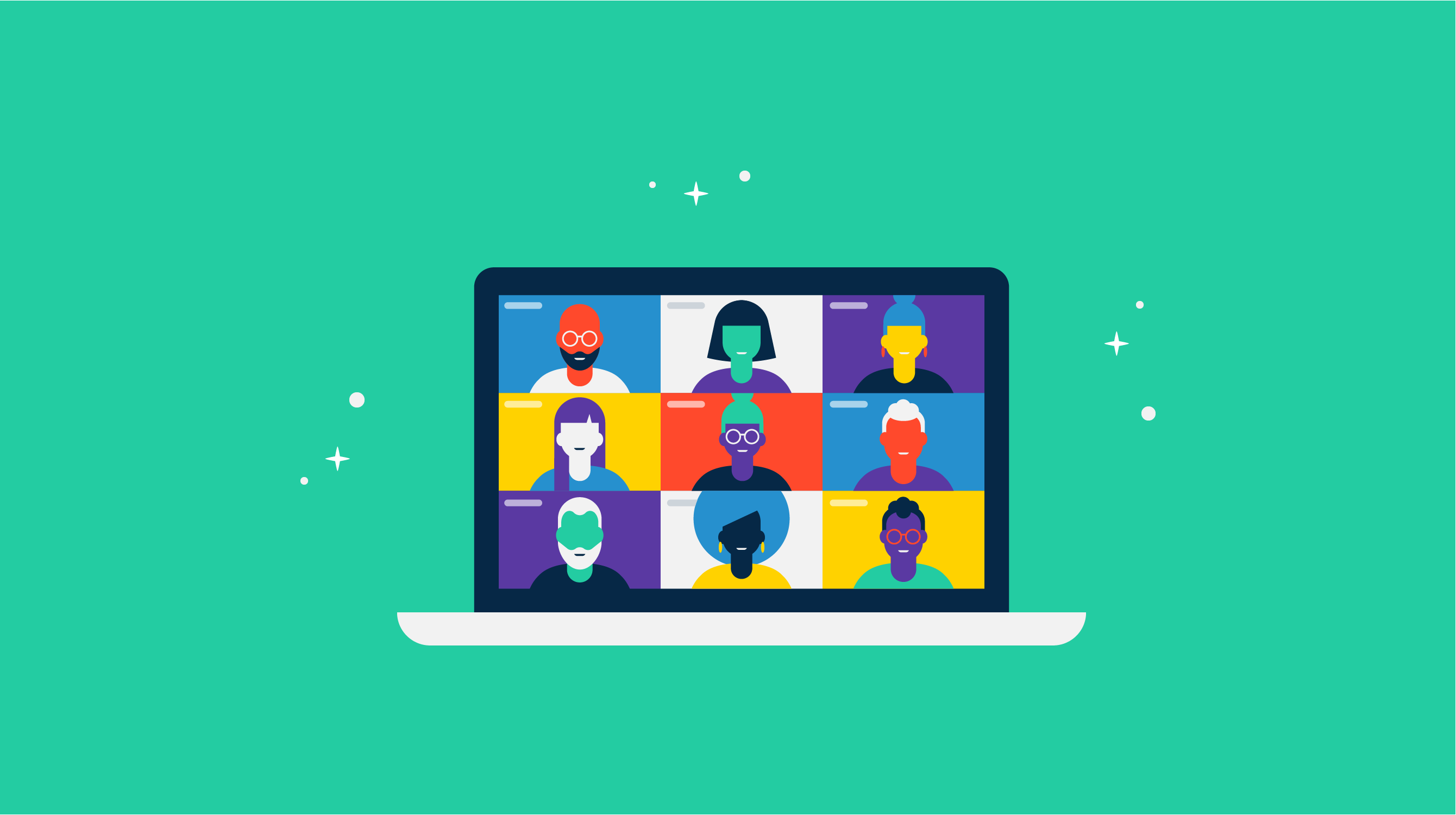
Virtual event platforms help you create immersive online experiences for attendees worldwide. With features like webcasting, live Q&A, and networking, you can deliver the same value of in-person events, digitally.
Muhammad Younas is the Founder and CEO of vFairs, an all-in-one event platform that provides innovative solutions to businesses around the world to help them run their in-person, virtual, and hybrid events. With over 15 years of experience in the technology industry, Younas has a proven track record of building successful businesses that drive growth and innovation. Under Younas's leadership, vFairs has become a global leader in the event tech space, offering a cutting-edge platform that enables businesses to host engaging and immersive events online. vFairs has served clients across 100+ industries, including government, education, technology, healthcare, telecom, and non-profits, among others.

Virtual event platforms help you create immersive online experiences for attendees worldwide. With features like webcasting, live Q&A, and networking, you can deliver the same value of in-person events, digitally.
Virtual events come with a whole lot of benefits, but with that they bring their own set of...
 by Falguni Jain
by Falguni Jain
Are you looking for new ways to enhance your event communications to drive early ticket sales,...
 by Elise Hanslip
by Elise Hanslip
In 1993, the first documented virtual event happened — an online trade show organized by the...
 by Akanksha Kumari
by Akanksha Kumari
Virtual events come with a whole lot of benefits, but with that they bring their own set of...
 by Falguni Jain
by Falguni Jain
Are you looking for new ways to enhance your event communications to drive early ticket sales,...
 by Elise Hanslip
by Elise Hanslip
Never miss a post.
Subscribe to keep your fingers on the tech pulse.

